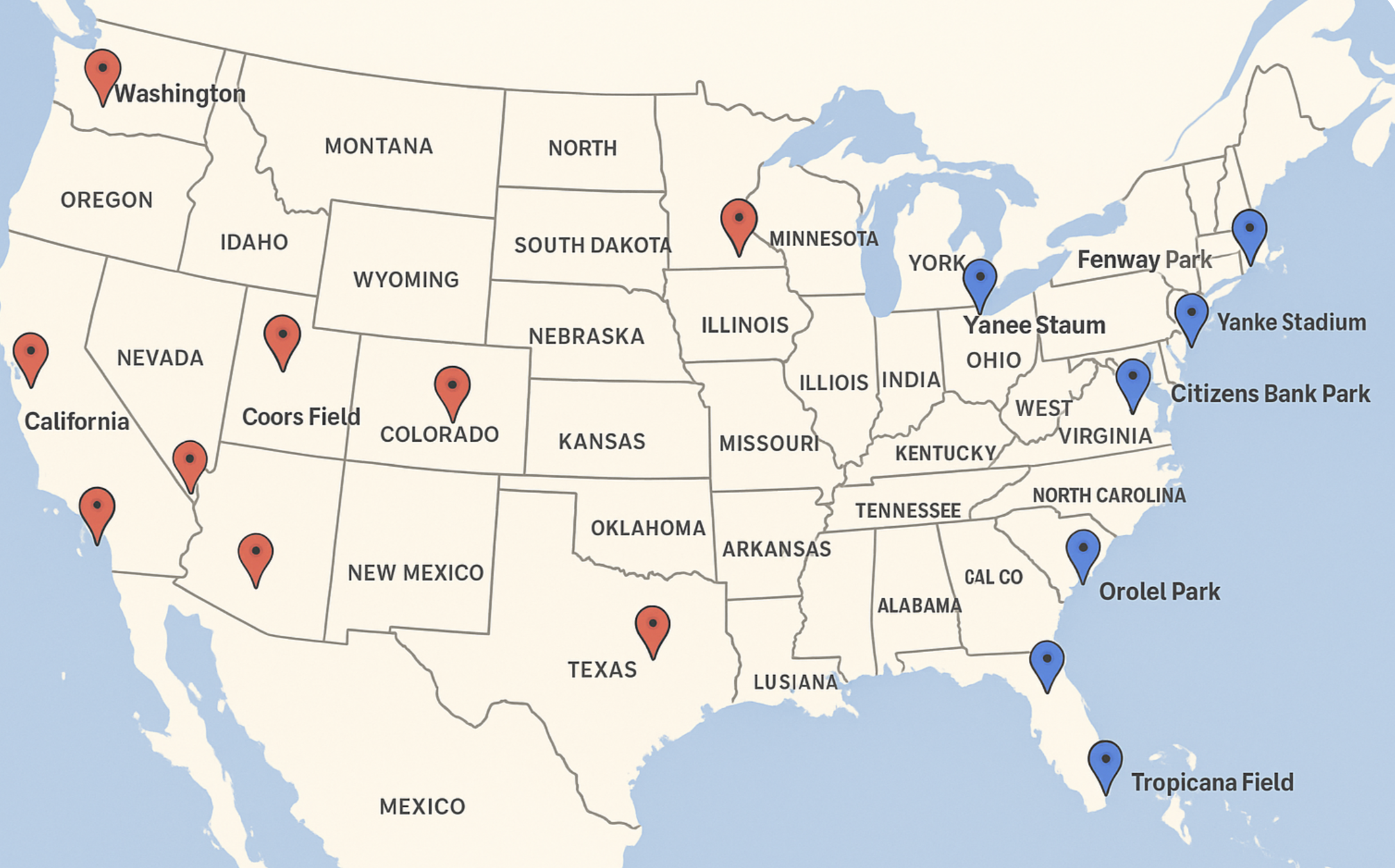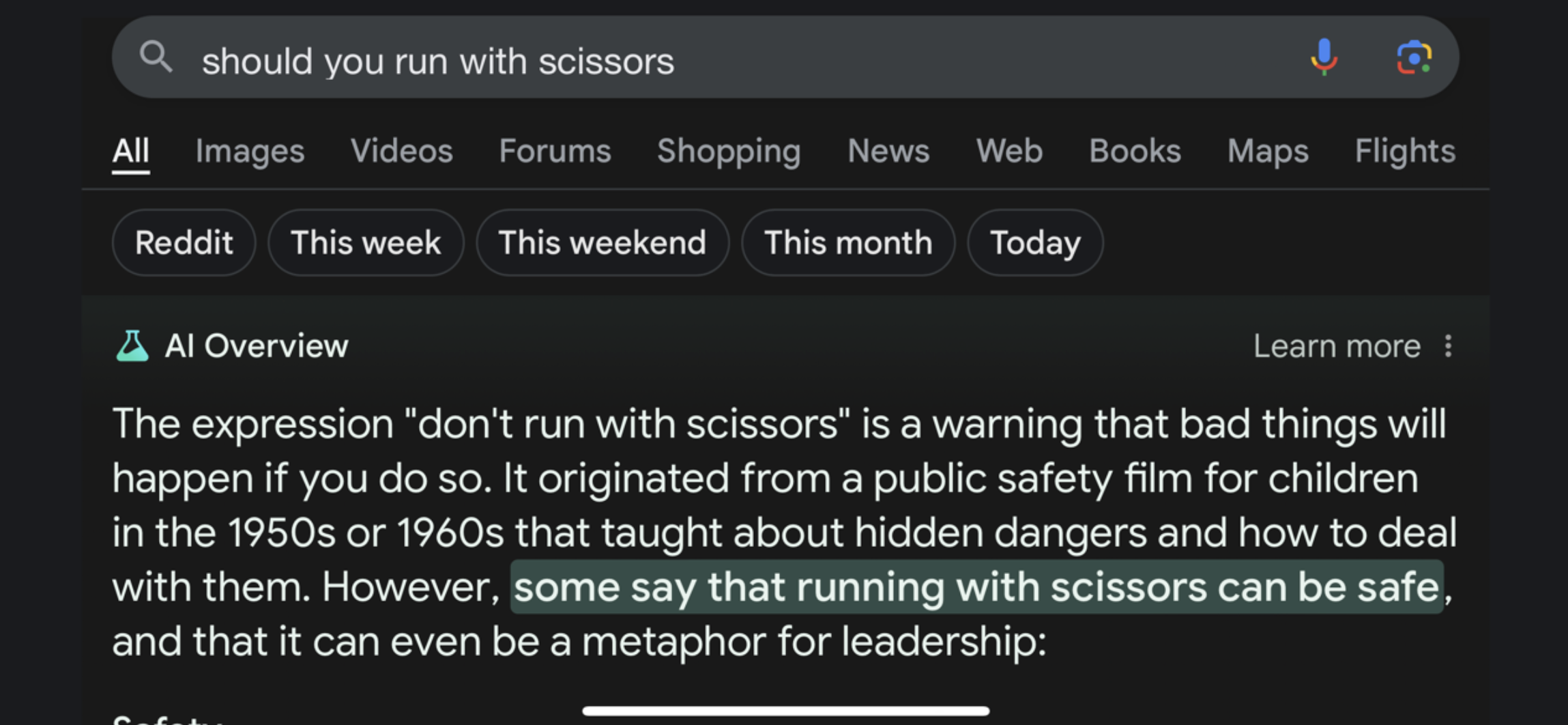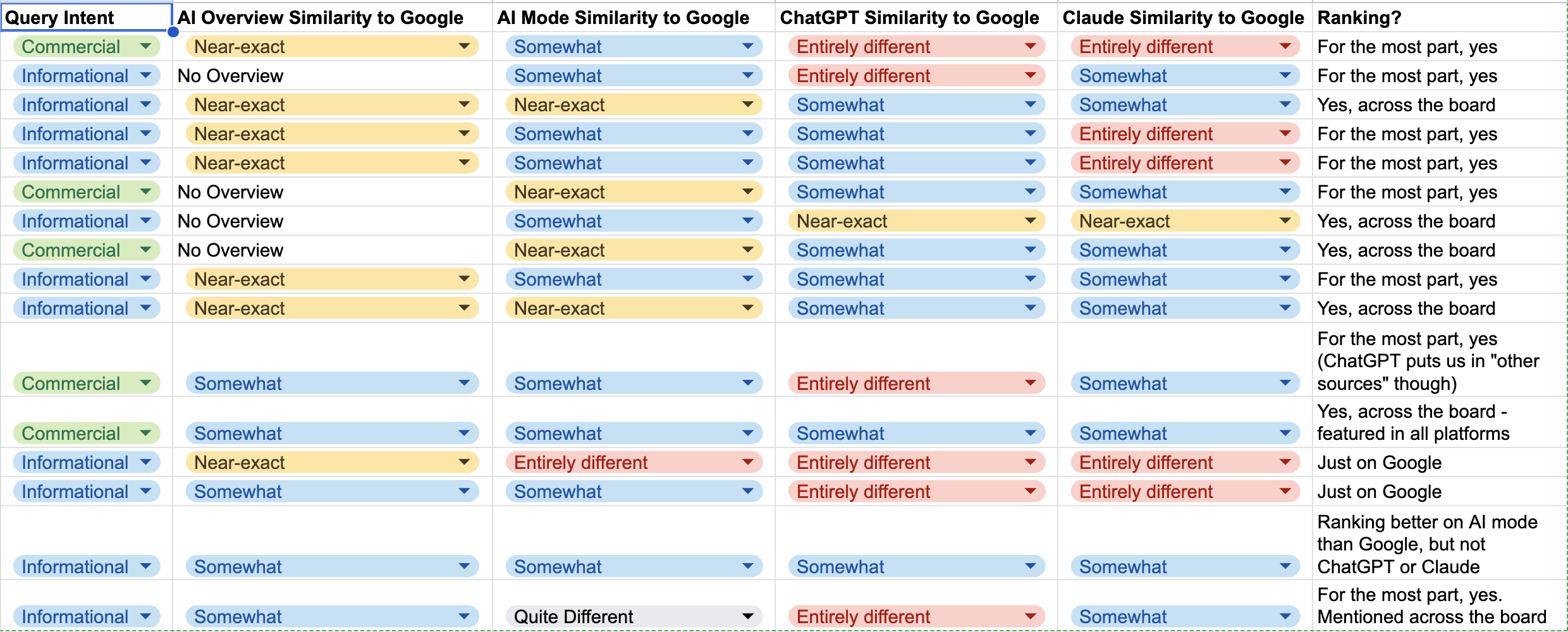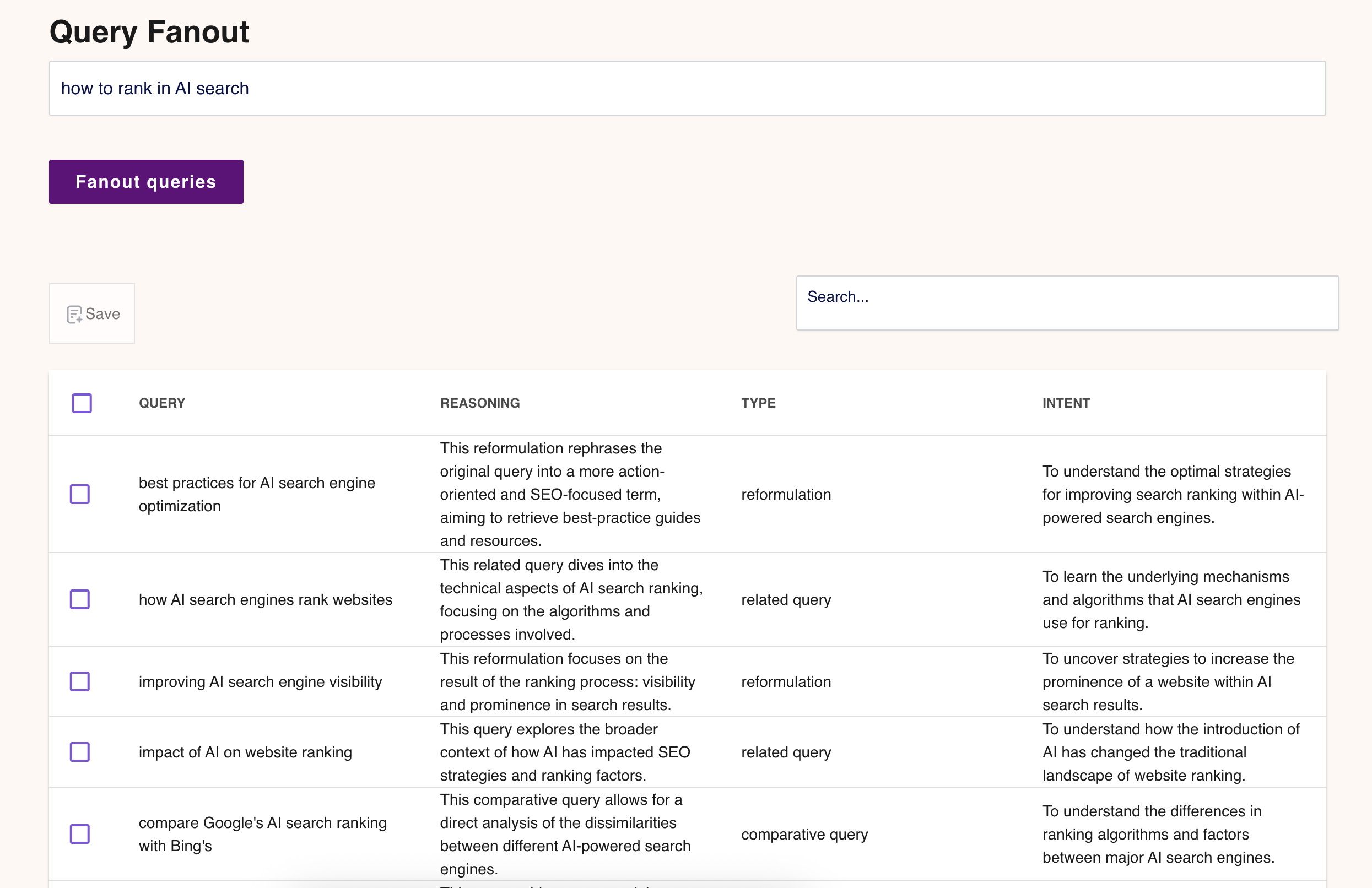
It's the understatement of the year: the SEO and content marketing landscape is undergoing a seismic shift.
But that's been the case for, oh, I don't know, the last several decades.
At the risk of being outdated by tomorrow, AI tools like ChatGPT, Claude, and Google's AI overviews are fundamentally changing how people find information online.
But contrary to what many marketers fear, this doesn't mean SEO is dead or content marketing is obsolete. Instead, we're entering an era where understanding both traditional search and AI discovery mechanisms is crucial for success.
Don't believe me? Keep on reading as I break down how AI models actually work, how they find and cite content, and how to adapt your marketing strategy to thrive and not just survive.
Let's get on a level playing field.
When we talk about AI in the context of search and content, we're primarily referring to generative AI models from companies like OpenAI (ChatGPT), Anthropic (Claude), Google (Gemini), and X (Grok).
These AI tools are sophisticated systems built on large language models (LLMs) that have fundamentally different ways of processing and delivering information compared to traditional search engines.
The key distinction is that generative AI creates content – whether that's text, images, code, or even video — it doesn't just predict outcomes or analyze data.
These tools create content by learning from patterns in existing data. They've consumed tens of thousands of books, newspaper articles (which led to the New York Times' legal issues with OpenAI), blog posts, and virtually any content available on the web.
What's fascinating is that machine learning, the foundation of these AI tools, isn't new at all.
The term was actually coined in the 1950s when computers were the size of living rooms. Arthur Samuel wrote a computer program in the 1950s to calculate the winning chances of a checkers match based on where pieces were positioned and how many had been captured.
The principles haven't changed, but the scale has transformed everything.
So we're all speaking the same language, here are a few terms I'll use throughout this article:
Square? Let's move on to the good stuff.
At their core, AI models are pattern recognition machines.
They've been trained on massive amounts of text data to understand how human language works. When you prompt them with a question, they're not actually "thinking" in the way humans do. Instead, they're performing billions of calculations to determine the most statistically likely response based on the patterns they've learned.
Think of them as incredibly sophisticated word calculators. When you say "I want an edgy blog post" versus "I want a friendly blog post" or "I want an official-sounding article," you're giving them context clues. The models use these clues to calculate: "What is the most likely sequence of words this person expects in response?"
This process happens through four key steps:
This brings us to a philosophical question that Alan Turing explored in the 1950s with his famous "Imitation Game" (later known as the Turing Test). Do computers actually think, or are they just so good at mimicking human responses that we can't tell the difference?
When humans think, we:
AI models, on the other hand:
This fundamental difference explains why AI models "hallucinate" – they don't have the contextual understanding to know when something doesn't make sense.
That's why ChatGPT will tell you that there are four "r's" in the word "Strawberry" or why asking ChatGPT to generate a map for a road trip to every MLB stadium looks like this:

Ah, I just love going to Yanee stadium. This was generated with ChatGPT 5 BTW, and it took five, count 'em, five, messages back and forth to get this image.
As the adage goes, knowledge is knowing that running with scissors raises your heart rate; wisdom is knowing it's not safe.

There is an exhaustive amount of literature about how Google discovers content, so I'll keep it brief. Google's spiders (crawling algorithms) discover new pages through multiple pathways:
Once Google lands on a page, it analyzes everything:
Google judges a site's importance through multiple factors (many revealed in Google's algorithm leak about a year and a half ago):
Instead of continuously crawling the web like Google, AI models are trained on datasets at specific points in time.
ChatGPT, for instance, releases new models a couple of times per year (GPT-4, GPT-5, etc.), each trained on updated datasets.
These models then analyze content beyond simple keyword matching. They look for:
AI models adapt quickly to website structure changes and can process multiple content formats:
Many AI companies have special partnerships for content discovery and model training. Most notably, OpenAI and Google have had special partnerships with Reddit (much to the chagrin of Redditors).
This is the key difference between LLMs and Google: once an AI model is trained, it doesn't actively discover new content until the next training cycle. This creates a fundamental limitation that affects how we should think about AI optimization.
This is the hundred-thousand-dollar question, isn't it?
Thanks to a crucial insight from leaked Claude system prompts that likely applies to other AI models as well: AI tools only search the live web as a last resort.
LLMs follow a clear hierarchy:
AI models will search the web when:
Through extensive testing with client keywords, I discovered something fascinating about which search engines LLMs use when they search the web.
Here's a snapshot of a study I ran for a client to test the different queries they rank for (and earn traffic for) in Google Search Console. I catalogued each query and asked AI tools in different browsers and windows to ensure my history was not getting in the way:

ChatGPT: Despite OpenAI's partnership with Microsoft, ChatGPT doesn't exclusively use Bing. My testing showed:
Claude: Built by Anthropic with no search engine ties, Claude shows:
Google's AI Mode & Gemini: Obviously uses Google, but interestingly:
The key takeaway: If you rank on Google, you have a better than average chance of appearing in AI responses when they search the web.
But how do you make it into the training data? Let's look at that one next.
Getting into AI training data is fundamentally different from traditional SEO.
It's not about authority or recency – it's pure statistics.
You can influence LLM training data through:
AI models learn through repetition and correlation.
If they see "Tyler Scionti" mentioned alongside "SEO expert" across multiple sources, they create that statistical connection. The more frequent and consistent these mentions, the stronger the association.
This is why:
The other piece of this is statistics. The more often you are mentioned and the more diverse your "digital real estate," the more likely you are to be the "right answer" according to a LLM.
To build the statistical significance needed for AI recognition, focus on:
I can't repeat this enough. Generative AI tools do not "search for the right answer." They try to calculate the most likely series of letters that you are looking for.
Bearing all of the above in mind, let's get to the good stuff: how the heck do you approach content in the age of AI?
Having conducted exhaustive tests for our clients, here are three keys we've found to succeeding on Google and in LLM tools like ChatGPT and Claude:
AI models don't just process single queries – they perform what experts call "query fan-out."
This is a fundamental shift in how search works. It's not enough to just center your content on one single query; you need to anticipate the future queries that your reader might search for next.
When someone asks, "What's the best film camera for beginners?", AI models might simultaneously search for:
I've seen AI models kick off 5+ parallel searches from a single query — this is quite common in Claude and Google's AI Mode. These LLMs are anticipating the user's next questions based on patterns they've learned from millions of similar queries.
Instead of targeting single keywords, map out complete question journeys. Using that example query for a film camera above, a more comprehensive set of questions might be:
Here's a tool we built for our clients to simulate this query fanout (and speed up our own content research processes):

You can also:
Note — we've written extensively about this approach, check out our guide to keyword research for a deeper dive into this!
This is where many marketers are overcomplicating things with technical jargon. AI models often cite specific paragraphs, not just pages. This means every paragraph needs to be a potential answer.
"Semantic chunks" sounds fancy, but it's really just good, clear writing. I like to think of it as writing that would get you an A-minus in high school English class.
When in doubt, I tend to fall onto the following checklist:
AI models process structure, so use:
Again, this is nothing more than common-sense. Grab a copy of The Elements of Style or Sense of Style and you'll be leagues ahead of your competitors.
Getting into AI training data requires presence across the web, not just on your site. Think of it as digital real estate – you need to own property in every neighborhood.
This will vary by industry, but as a rule it's helpful to pay attention to your presence on the following:
Review Platforms:
Social Proof Channels:
Community Participation:
Media and PR:
Content Syndication:
One of my SaaS clients in the lab software space achieved AI citation dominance through:
The result is that Claude and ChatGPT now quote them verbatim when asked about lab software options.
Recently, I decided to dabble in film photography. What ensued is a fascinating (and real-life) example of how Google and AI models can join forces to influence a buying decision.
For narrative purposes, let's break this journey down into the following stages:
Obviously, my first choice was Google.
I searched for "Best film cameras for beginners" and was quickly overwhelmed by the content that ranked. This was good, SEO-optimized content, but it was far too much for me at this stage!

I found several 5,000+ word blog posts with 15-20 camera recommendations and technical specifications I didn't understand.
It was just too much, I wanted to choose from two or three cameras, not 20!
When I want human-led insights, I turn to Reddit for advice. My next search was for" Best film cameras for beginners Reddit" to pull Reddit posts from people just as confused as I was.
This was instantly more helpful than the SEO-driven content that I found!
There were answers from real photographers and consistent mentions for a few popular models of film cameras that were both affordable and accessible for beginners like me. What's more, this also included anecdotes from the people who used the cameras, which helped shape my decision.
I was caught between the following models:
Now that I knew what to search for, I could narrow the type of content that Google returned to me.
I didn't want a treatise on film photography; I wanted to know what the pros and cons of each model were, and I wanted comparisons between them. I kicked off a series of searches like:
Which returned helpful and instructive content that influenced my buying decision. I got comparisons from photographers, in-depth reviews of each camera and sample photos,
This was exactly what I needed for a buying decision, and I ended up choosing the Pentax K1000 and have already shot three rolls!
This journey reveals that AI and traditional search serve different purposes:
So here's the million-dollar question: Is content still worth creating? Are blogs still a valid SEO strategy, or should you invest your time elsewhere?
There are two elements to this:
Let's answer these one at a time.
If you're creating content purely for the purpose of information transfer to drive traffic, I'm sorry, but that is long dead.
What do I mean by information transfer? Any of the following:
As we saw above, AI can generate this instantly and often more concisely.
But this is just one type of content that you could create. It's also the lowest-effort and often the least likely to return any form of ROI, which is why I've been deprioritizing it for years when building SEO strategies for our clients.
In a word, yes. But only if it's the right kind of content.
Sure, you could feed ChatGPT a list of 50 keywords and ask for SEO-optimized content to target each keyword, and it'd do a decent job. But so can your competitors.
While it feels like you're getting ahead, you're really just generating nearly identical content to your competitors and putting your website in a race to the bottom.
Here's what works better for our clients:
Experience-Based Content:
Problem-Solving Narratives:
Strong Opinion Pieces:
Think outside the box with content, and you still have a great shot at success.
SEO as a traffic-generation channel, and that alone, is dying out. I'll give you that.
But traffic has never been a good business outcome anyway. When I first meet with a client, I always make a point to ask them what their goals are. The second, they say, "we want more traffic." I stop them. I ask them what they want to happen with that traffic, and then they tell me something valuable: "Well, we want more leads/demos/SQLs, etc."
Stop measuring content success purely by traffic or keyword rankings and start measuring the following:
Traffic doesn't pay the bills, but brand recognition and sales often do.
We've covered how AI tools work, how search behavior is changing, and what type of content is worth creating. Now let's dive into what I've seen work to stand out in the ever-increasing sea of AI-generated noise:
Remember that AI tools regurgitate the statistical average of opinions. That means they can't form a unique opinion, but you can.
Your unique stance is irreplaceable, and it's the new competitive moat for your content strategy. To develop a unique POV for your brand, do the following:
Example POV Development:
AI tools are trained to generate grammatically correct and proper text. They won't write in fragments. They won't swear. They won't make niche pop-culture references (unless they are told).
But again, you can! Break the rules — strategically — by doing the following:
Once again, play against the base limitations that someone with a ChatGPT subscription will encounter: they can generate a metric truckload of blog content, but it takes creativity to create content that is unique and stands out.
Try creating interactive content like:
(Yes, ChatGPT can help you with this — but it takes a brain and rock-solid understanding of your customer to start the process!).
Explore multi-sensory content through visual elements like:
Or incorporate audio to complement written text with podcast episodes, audio summaries, or clips. And let's not forget the one thing you can always do that your competitor hiding behind their computer screen cannot: show up live.
Run webinars, AMAs, office hours, or consultations to show up physically for your target market.
Marketing is changing — fast.
I won't deny that. But the same could have been said when Facebook and Twitter launched, and everything blew up around social media. Or when search engines went mainstream and every business started building a website. Or when the television was invented and replaced print ads.
The point is that the tactics are quickly evolving, but good marketers know that they need to take a step back to pay attention to how their customers research and buy products and let that influence their tactical decisions.
AI tools are disrupting how we consume information. So lean in. Build relevance to earn mentions, rank on Google so you are cited when they search the web, and make sure that your content sticks the landing when they actually engage with it.
It really is as simple as that. Of course, that doesn't make it easy!
Tired of spammy, boring marketing newsletters? Why not subscribe to...
Delivered to your digital doorstep every Friday.